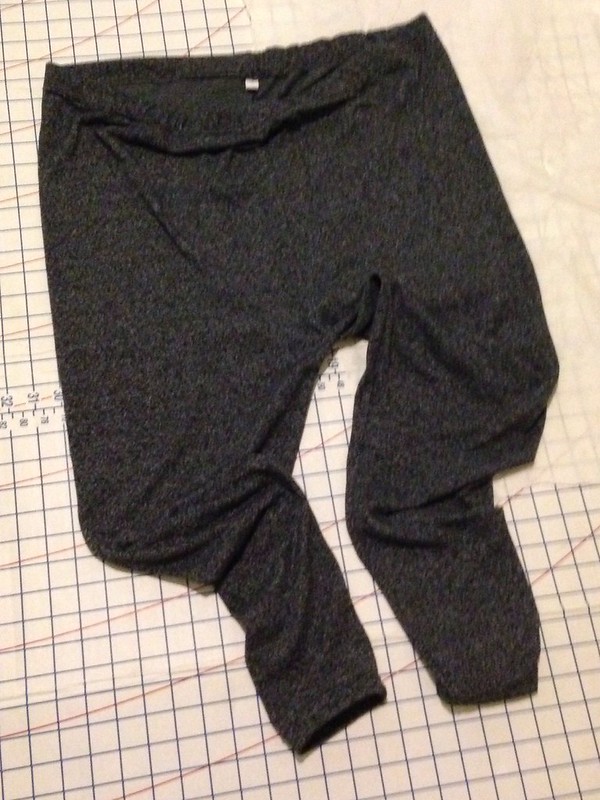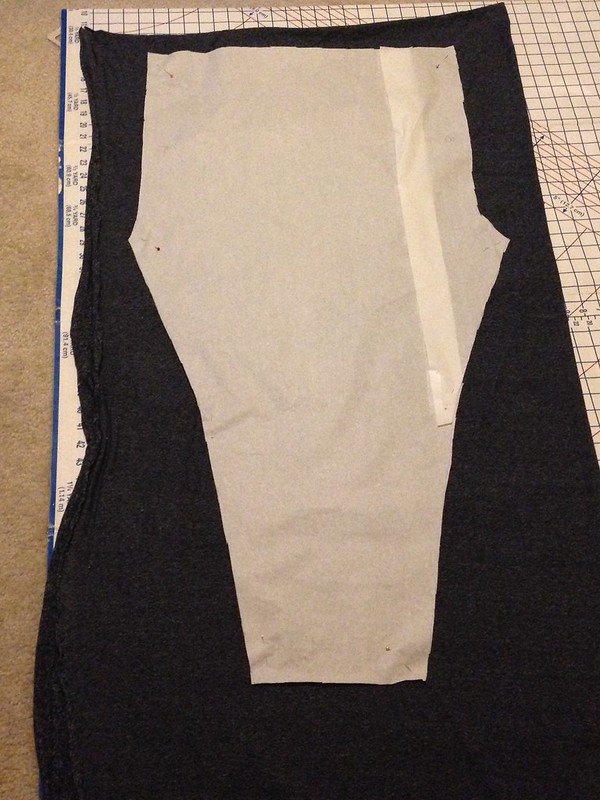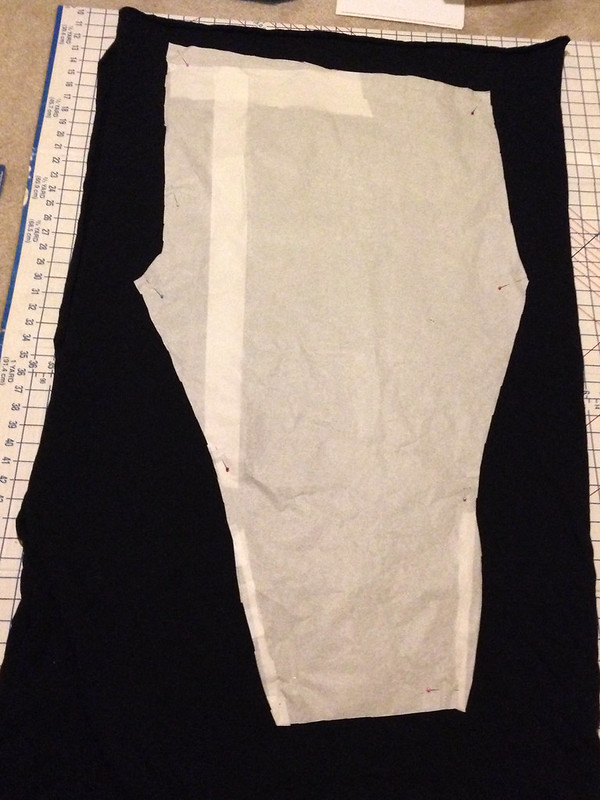From my experience, after you hit the Publish button, one of two things happens:
- You get a ton of responses, and those responses are all over the map in their usefulness. Some responses will likely contradict each other, and you have to wade through those to try to figure out what alteration to make. I remember one time when I posted a request for fitting help, I was told by one poster that I had sloping shoulders and by another that I had square shoulders.
- You get...silence. Maybe you get a couple of posts with possible suggestions, if you're lucky. This certainly doesn't help your confidence level with what your next step should be after that muslin.
I've put together a list of my own suggested tips for both people asking for fitting advice and people giving fitting advice. If you've got your own suggestions, I'd love for you to post them in the comments section!
5 tips for asking for fitting advice
These are my suggestions on what to include in your post requesting fitting help. In a nutshell, including more information for fit helpers and focusing your request will increase the likelihood that you solve a particular fitting issue.
- The fabric that you use for your muslins should be a solid, light color.
If you're concerned enough about fit to post on the internet about it, I'll assume that you'll also be making a muslin or two for your project. Ideally, your muslin fabric should be a light color and should not be a print so that helpers can more easily see whatever wrinkles and drag lines pop up. Understand that if you wind up making significant changes to your pattern based on your first muslin, you might need to make a second muslin and another round of adjustments to fine-tune your fit before cutting into your "good" fabric.
- Include pictures in your post.
Diagnosing fitting problems is extremely difficult without a visual reference. The photos don't need to be of great quality, but they'll help your fitting helpers see what you're seeing. If you don't have anyone to take pictures for you, learn to use the self-timer on your camera or download a self-timer app for the camera on your phone. Take your photos with your arms at your side, and include at least one photo from the front, back, and side angles.So...many...wrinkles to read! - Be specific, if possible.
Being specific will both help focus the people who help you and where to look, but should also help focus their advice. For example, posting "I know that I need a bigger FBA, but what's that weird drag line coming down from my shoulder" should hopefully elicit suggestions related to your shoulders and not a half dozen responses telling you that your garment is too tight across your bust or that you need a bigger FBA. Granted, sometimes the response will then be "When you increase your FBA, that drag line will go away."
- In your post, include as many of your measurements as your are comfortable (if relevant).
If you're asking for help fitting a top or bodice, include your high bust, full bust, and waist measurements. If you're asking for fitting help with pants or a skirt, include your waist, high hip and low hip measurements. These measurements can helpers zero in on what might be causing your fitting issue. Make sure to include your height and anything notable about your proportions (e.g. short-waisted). Fitting issues aren't just caused by your horizontal body space; they can be caused by your vertical body space, as well. - Be open-minded but understand that you might need to take some advice with a grain of salt.
Read through the responses to your request and take a few moments to process them before slicing and dicing your pattern. Understand that just because you've never needed an FBA or an SBA before, doesn't mean that you don't need one for this particular pattern, especially if it's a new-to-you pattern company.
On the other hand, not everyone who responds to your post is likely to be a fitting expert for your particular body type. Some people zero in on a large bust and automatically think that you'll need an FBA or a larger FBA, when that might not be the case. (Hint: Having a very large bust can cause fitting issues outside of the arena of FBAs.)
5 tips on giving fitting advice
If you're somewhat experienced with fitting (or at least with a few particular fitting issues),
- Keep it short and specific; concentrate on the question(s) asked.
We all know that a person's body can deviate from a pattern draft in multiple ways. However, as a person asking for fitting help, it can be overwhelming to read a huge paragraph of text of all of the changes that someone is recommending that you make to a pattern. As someone who has been there, your eyes just sort of glaze over and you think, "Why am I even bothering with this pattern if this is what I have to do to make it work for me?" If the requester asked for help with a specific issue, help her with that issue and avoid the urge to comment on every single other wrinkle you see unless you suspect that they're related to the issue she's asking about.
Besides, if you're experienced enough to post fitting help, you probably also know that a sewist should start making adjustments at the point that a garment hangs from, and then work her way down from there. Sometimes an adjustment to the shoulders can fix other issues further down the garment.
- Take the poster's skill level and confidence level into account with your answer.
A beginning seamstress might be ready to tackle a traditional slash-and-spread FBA, but unless she's really confident, she might not be ready to tackle that FBA and rotate darts. Consider mentioning a shortcut method along with the "correct" method for an alteration in this case.
Additionally, if you suggest an alteration to a novice seamstress, give a line or two of description of what that alteration is and what it does. Even better, include a link to a tutorial, if you know of a good one. Not everyone owns a copy of Fit for Real People or has the text of that book memorized. Don't just tell her to extend her back crotch length, explain that she needs more length going over her bum, and here's how you add that length. - Keep body-shaming out of your advice. Don't tell a poster that a style is a bad choice; they chose that style for a reason.
Trust me, every female sewist with a very large bust has been told to stick to princess seams at some point. While princess seams might be easier to fit well than a darted bodice, think about, wouldn't you like a little variety other than princess seamed garments in your closet?
Where I do think it would be a service to say something, though, would be if you know of a pattern with similar details that might work better for the requester. For example, if a plus sized woman is struggling with grading up a Burda pattern that stops at a size 42, it could definitely potentially save her a headache to suggest a similar pattern from a company with a wider size range.
If you do offer style advice, keep it general. For example, "Princess seams are easier to fit on a large bust" sounds a heck of a lot nicer than "You should stay away from darted bodices," doesn't it? - If you're not the first person to post a response, say whether you agree or disagree with the preceding poster(s) and explain why.
When the person requesting help reads the responses that she receives, she's going to need to wade through the advice and figure out which adjustments to make next, and that can be confusing. Let's say that an earlier helper has already told her that she has sloping shoulders, but from reading her muslin wrinkles, you think that she has square shoulders. In your response, explain why her wrinkles are pointing to square shoulders, in your opinion. On top of that, if three other posters also told her that she has square shoulders, by agreeing with them and saying why, you're adding weight to that opinion. - Don't be shy about bringing up known issues with a particular pattern or pattern line.
Not everyone reads every review or blog post about every pattern. However, for those of us who do read a lot of pattern reviews, we might be aware that certain patterns are known for certain issues. For example, a lot of women have had issues with the back neck gaping on the Colette Peony or that many women have trouble with the rear view of their pants fit from Big 4 patterns. If you're armed with this knowledge, you can decide how much work you want to continue putting into adjustments and muslins, or if you want to move on to try to find a similar pattern from another company.
The infamous Lekala wadder









